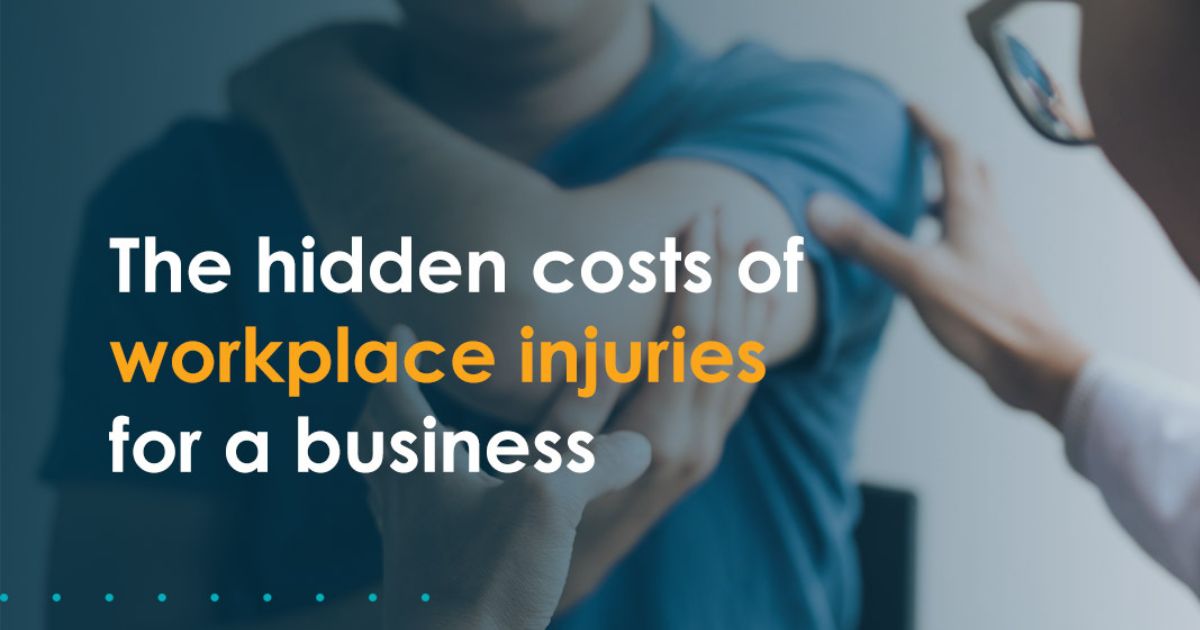Unveiling Workplace Injury Origins
In the realm of workplace safety, injuries often spring from unexpected sources. Amid the apparent haven of workspaces, accidents like slips, trips, and falls silently thrive. Unforeseen hazards, from overexertion during physical tasks to the stealthy dangers of machinery, lurk in the daily routines of employees.
The Dance of Slips, Trips, and Falls
In a seemingly coordinated choreography, slippery surfaces, cluttered walkways, and dimly lit corners conspire to orchestrate slips, trips, and falls. These seemingly innocuous mishaps are often the most prevalent culprits behind workplace injuries.
Muscles Strained, Bodies Aching
A symphony of overexertion plays out as employees grapple with heavy loads or repetitious motions. Musculoskeletal injuries quietly brew, stemming from the lack of proper lifting techniques or ergonomic work environments.

Machinery’s Unforgiving Grip
Machinery, while a marvel of modern productivity, holds the potential for grave injuries if mishandled. The lack of safety guards, coupled with inadequate training or equipment malfunction, sets the stage for accidents that can maim or even cost limbs.
Collisions and Falling Hazards
The mundane act of objects falling from shelves or workers being struck by moving equipment assumes a perilous guise within workplace dynamics. These seemingly trivial instances lead to concussions, fractures, or worse.
Sparks Fly with Electrical Hazards
Amid wires and circuits lie the hidden risks of electrical shocks and burns. Malfunctioning systems or exposed wiring weave a dangerous tapestry, often causing injuries that reverberate beyond the immediate moment.
Chemical Dance of Danger
The tango with hazardous materials is fraught with peril. Mishandling chemicals without proper safeguards leads to burns, respiratory ailments, or insidious health issues that linger.
Shadows of Workplace Violence
Dark shadows cast by internal conflicts or external threats manifest as workplace violence. Physical injuries and emotional scars bear witness to these unfortunate incidents, demanding heightened security measures and conflict resolution strategies.
The Armor of Personal Protective Equipment (PPE)
The absence of protective gear acts as an invitation to disaster. Failure to don helmets, gloves, or goggles amplifies risks in hazardous environments.
Fatigue and Stress: Silent Aggressors
Fatigue and stress seep into the workplace, blurring focus and slowing reactions. The silent assailants compromise safety, contributing to accidents and injuries.
Crafting the Shield: Prevention Strategies
In this intricate dance between safety and danger, the spotlight falls on prevention strategies:
- Education and Training: Illuminate the path to safety with regular training sessions and hazard identification drills.
- Protocol Fortification: Strengthen the fortress of safety with explicit guidelines and emergency procedures.
- Vigilant Oversight: Regular inspections of equipment and work areas serve as sentinels against potential hazards.
- Culture of Openness: Foster an environment where reporting hazards is not just encouraged but ingrained.
- Safety as Culture: Infuse the organization with a DNA that prioritizes safety as a collective responsibility.
- Ergonomic Haven: Design workspaces that embrace ergonomic principles, warding off musculoskeletal injuries.
Curtain Call: A Safer Tomorrow
The labyrinth of workplace injuries demands deciphering to forge safer environments. By unraveling the intricacies of injury causes and enacting comprehensive safety measures, workplaces can script a narrative of security, ensuring the well-being of their most valuable assets—their workforce.
This rendition seeks to present the common causes of workplace injuries with a unique perspective. If there’s a particular angle or aspect you’d like to explore further, feel free to ask!
